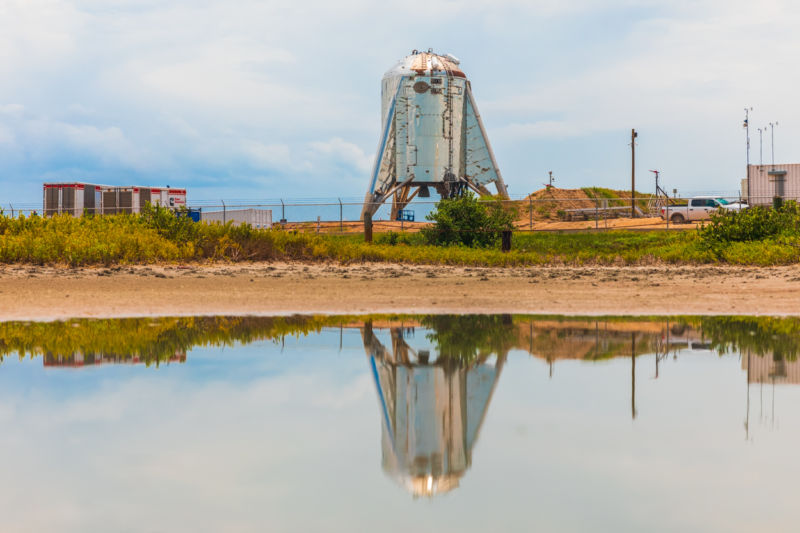
Trevor Mahlmann for Ars
As soon as Monday afternoon, SpaceX may attempt a second flight for its Starship prototype named “Starhopper.” The stubby vehicle, which resembles a water tower, will seek to make a controlled flight to 150 meters above the ground before returning to land safely at SpaceX’s test site in South Texas.
One month ago, Starhopper made its first untethered flight, rising about 20 meters. Although smoke from the vehicle’s single Raptor engine shrouded most of that test flight from view, it came off successfully and validated the company’s ability to control the Raptor engine in flight.
This weekend, Cameron County officials notified residents in Boca Chica Village, near the test site, that the company plans to conduct a flight test from 4pm to 4:15pm CT Monday, and “there is a risk that a malfunction of the SpaceX vehicle during flight will create an overpressure event that can break windows.” The Brownsville Herald reported that residents were advised to go outside during the test, which would be signaled 10 minutes in advance by a siren, for their safety. In its latest approval, the Federal Aviation Administration mandated that SpaceX purchase $100 million in liability insurance.
Although SpaceX does not anticipate losing the Starhopper vehicle, which measures 20 meters tall, this will be the vehicle’s last flight. This fall, the company hopes to begin flying suborbital tests of larger Starship prototypes that have similar dimensions to the actual vehicle that will launch into space.
After the 150-meter Starhopper test, SpaceX founder Elon Musk has said he will provide an update on the development of Starship during a presentation in Boca Chica. He has not set a firm date for the presentation but has said it probably will occur in mid-September.
In recent months, separate teams of SpaceX engineers in Boca Chica, as well as Cocoa, Florida, have been working on their full-sized prototypes—Starship Mk 1 and Mk 2 respectively. These vehicles will fly, initially at least, with a complement of three Raptor engines. The full-scale Starship, which will launch into space on a rocket called “Super Heavy,” is planned to have six engines; it will be capable of landing on and taking off of distant worlds, including the Moon and Mars.
By using two different teams of engineers, SpaceX is following a rapid, iterative process of technology development for the unprecedented spacecraft. it is unclear how long it will take to get everything right, including the difficult process of re-entering Earth’s atmosphere without burning up the vehicle, but orbital flights of Starship could occur as early as next year.
The next step, however, is a much more modest hop a few hundred meters above a Texas beach. A list of livestreams for Monday’s potential test has been curated by the SpaceX subreddit. Hopefully, the company won’t break any windows.















